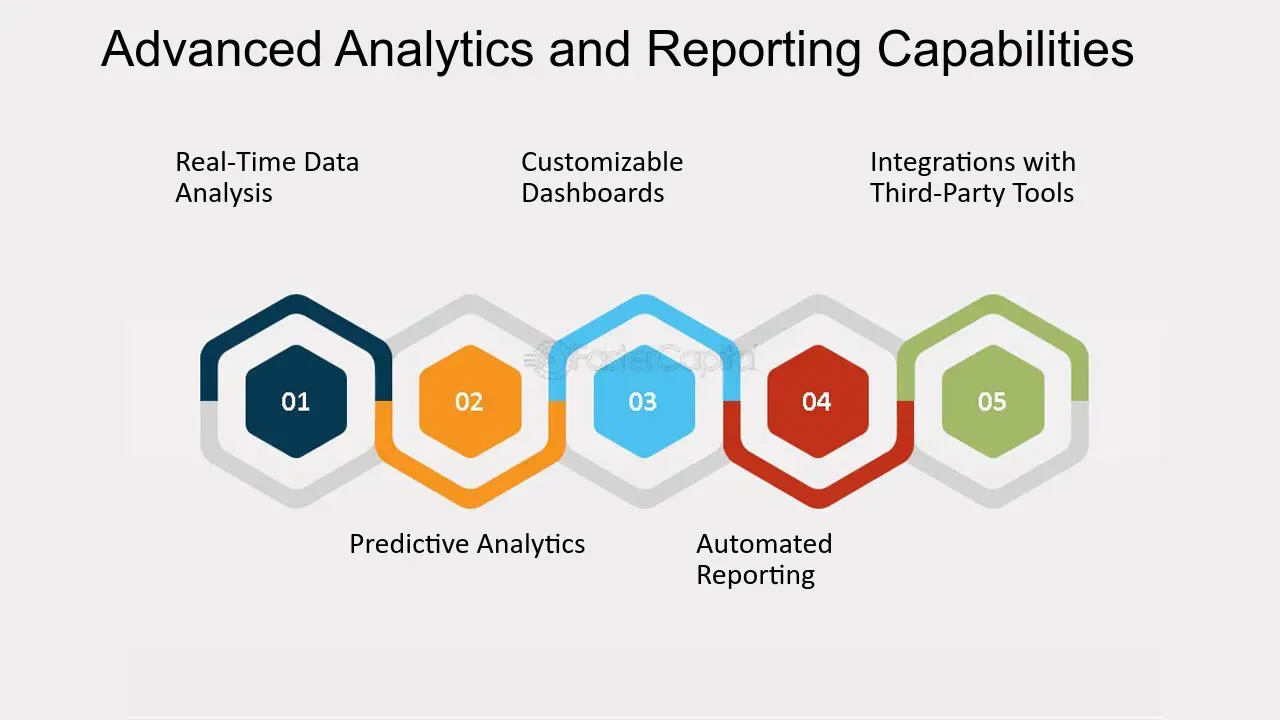Introduction
The platform that organizations use for conversational AI has a big impact on how they interact with consumers.
A carefully planned conversational AI platform not only increases output but also promotes customer satisfaction. It is the foundation for business growth.
On the other hand, the wrong platform might lead to unhappy customers, lost opportunities, and waste of resources.
After all, conversational AI platforms have emerged as indispensable tools for businesses seeking to enhance customer engagement and streamline operations.
These platforms leverage artificial intelligence and natural language processing to facilitate human-like interactions through chatbots, voice assistants, and other conversational interfaces.
As the demand for Conversational AI continues to soar, selecting the right platform becomes crucial for organizations aiming to deliver exceptional user experiences and drive business growth.
But not to worry. As in this blog, we have listed out the top 5 things to look for in a conversational AI platform. So continue reading to find out.
5 Things to look for in a Conversational AI Platform
Conversational AI should be implemented carefully while considering these factors. Let's look at the important factors that influence consumer interactions as well as business performance:
Natural Language Processing (NLP) capabilities
Natural language processing (NLP) refers to a conversational AI platform's ability to understand and analyze natural language. Even when users use complicated language patterns, the system can understand their questions and instructions with precision.
This is possible because of NLP algorithms and technology.
Importance of understanding and interpreting complex language
A Conversational AI platform must have the ability to process natural language (NLP).
Companies get different types of consumer requests and instructions, some of which could be complex and difficult to understand. However, the system should be able to understand the user's purpose correctly.
Not only that, it should be able to give appropriate answers.
NLP algorithms and technologies to look for
The NLP algorithms and technologies that a conversational AI platform uses should be considered while analyzing it. Look for platforms, like BotPenguin, that use cutting-edge natural language processing (NLP) methods including entity recognition, sentiment analysis, and deep learning models.
These changes improve the platform's intelligence and accuracy. it’s possible to have more complex interactions with the help of a conversational AI platform.
Multichannel support
The capability of a Conversational AI platform to be accessible across many channels is referred to as multichannel support.

This includes well-known platforms including social media, messaging applications, mobile apps, and webpages.
Businesses can connect with customers wherever they like to interact by offering a comfortable and consistent interaction experience with the support of many platforms.
Availability across multiple messaging channels
Customers interact with businesses using different communication channels. It could range from social media platforms, mobile applications, and websites to messaging apps.
For a Conversational AI platform to reach consumers wherever they choose to engage, it must support various channels. Companies can provide an effortless and consistent experience on multiple platforms as well with the use of conversational AI chatbot.
For instance, BotPenguin is a conversational AI chatbot platform that provides multichannel support. It is easy to use with simple flow design.
Seamless integration with existing communication channels
Whatever platform customers choose, must effortlessly integrate with the current communication channels used by the company.
Integration makes conversation management easier and ensures uninterrupted interaction between the Conversational AI platform and current systems. This increases productivity and keeps client interaction from being disrupted.
Customization and personalization options
Businesses can customize and personalize the Conversational AI platform to meet their own specific needs. Chatbot design that fits required business processes and brand personalities is part of this.
The platform can recognize and make use of user preferences and behaviors thanks to customization abilities. It also allows for customized suggestions and answers.
The customization and personalization increase user engagement and happiness.
Ability to tailor chatbots to specific business needs
Every company has its specifications and identities for its brand. Businesses should be able to customize chatbots to meet their specific needs with the help of the conversational AI platform of their choice.
The chatbot's tone and personality should be in sync with the brand voice. It’s important that only industry-specific data should be implemented, and dialog flows must be set up accordingly.
Personalization features for a better user experience
Creating a personalized experience for customers is important. Look for a platform with customization abilities including the ability to record and use user actions and preferences.
This makes it possible for the Conversational AI platform to offer personalized answers, ideas, and recommendations. This will eventually increase customer happiness and engagement.
Analytics and reporting capabilities
Through analytics and reporting features, organizations can monitor the effectiveness of their Conversational AI platform and learn from the discussions. These features could offer Important information including user intents, frequently asked questions, and challenges.

Businesses can find patterns, get user input, and continuously improve the platform for better outcomes by looking at this data.
Businesses could manage key performance metrics and track the performance and efficiency of the platform.
Gathering insights and data from conversations
Analytics and reporting methods are important for monitoring and improving Conversational AI performance.
The platform should have strong analytics capabilities that collect data from chats, such as user intents, frequently asked questions, and common difficulties. This information can then be evaluated to identify patterns, get user input, and make data-driven improvements.
Reporting tools for monitoring and improving performance
Reporting tools offer important insights into the Conversational AI platform's productivity and effectiveness. Look for solutions with dashboards for continuous tracking of performance data, and adjustable reports.
Businesses can track KPIs, identify bottlenecks, and continuously improve the platform with the help of these technologies to get better outcomes.
Scalability and flexibility
The term "scalability" describes the Conversational AI platform's ability to manage growing conversation volumes without compromising efficiency.

A scalable platform can manage times of high traffic and develop with your company. The platform's flexibility is its capability to integrate with current workflows and systems.
Through seamless integrations with CRM platforms, knowledge bases, ticketing systems, and other technologies, integration capabilities offer error-free operations.
Ability to handle increasing volumes of conversations
The Conversational AI platform must be able to manage the growing number of inquiries without compromising performance as businesses expand. Look out for platforms with features related to scalability, such as resource management efficiency, and auto-scaling. This ensures that even during times of high traffic, the site is responsive.
Integration capabilities with existing systems and workflows
Successful operations depend on successful integration with current procedures and systems. The platform should be able to easily interact with knowledge bases, ticketing systems, CRM systems, and other systems.
This provides a consistent and easy customer experience and enables the quick and effective solution of questions from customers.
Case Studies: Real-world examples showcasing the importance of these factors
Each of these important components plays an important role in developing great customer experiences. They helped to improve operational efficiency and drive growth for the company in each of these case studies.
These examples show the value of considering all of these factors seriously when selecting a Conversational AI platform for your business.
Natural Language Processing (NLP) capabilities:
NLP capabilities are important in the banking business for offering good customer service. A large bank, for example, launched a Conversational AI platform with powerful NLP algorithms.
Customers can use natural language to communicate with the chatbot and ask about account balances, transaction history, and loan options.
As a result of the chatbot's superior NLP skills, it was able to understand customer questions accurately, resulting in faster and more customized replies.
Multichannel support:
A retail company saw the need to engage customers across several platforms. By deploying a Conversational AI platform with multichannel support, the organization could interact with consumers through its website, mobile app, and social media channels.
As clients could connect through the method of their choice, this strategy improved customer satisfaction and sales conversions.
Customization and personalization options:
An e-commerce company wants to deliver customized recommendations to its customers. The organization was able to record customer preferences, past purchase history, and browsing behaviors by using a conversational AI platform.
It’s possible with the help of customization and personalization options. The system next generated focused product suggestions, resulting in greater consumer engagement, sales, and customer loyalty.
Analytics and reporting capabilities:
A travel business used a conversational AI platform with strong analytics and reporting features. The agency found popular vacation locations, typical consumer requests, and developing trends by analyzing data from customer chats.
This enabled them to customize their marketing efforts, improve the content of their website, and improve client experiences. With this data, the business saw an increase in bookings and an improvement in customer satisfaction.
Scalability and flexibility:
An e-commerce platform saw fast development, leading to an increase in customer questions and support requests. The organization managed the increasing volume of discussions without losing response times by installing a conversational AI platform that offered scalability and flexibility.
The platform was simply connected with their current systems, allowing for efficient management of questions from customers and easy interaction between the AI-powered chatbot and human agents.
Conclusion
In conclusion, selecting the right Conversational AI Platform is crucial for businesses seeking to enhance customer engagement. As it increases customer engagement by 30% according to Statistica.
By prioritizing the following five key factors, organizations can ensure they choose a platform that aligns with their specific needs and objectives.
Those five key factors are natural language processing (NLP), multichannel support, customization and personalization, analytics and insights and scalability and flexibility.
Natural language processing is paramount for delivering meaningful interactions and understanding user intent accurately. Multichannel capabilities allow seamless integration with existing channels and data sources. It ensures a cohesive user experience.
Furthermore, customization ensures that the platform can be tailored to match the brand voice and unique requirements of the business.
Scalability enables businesses to adapt and grow their conversational AI solutions as their customer base and requirements evolve.
Lastly, robust analytics and insights empower businesses with valuable data-driven insights to continuously optimize and improve their conversational AI strategies.
The five-in-all platform - Botpenguine could provide you with all of these features. With BotPenguin, businesses can improve operational efficiency, boost consumer engagement, and eventually encourage corporate success.
The success and performance of the platform are largely dependent on the important aspects we looked into, so implement it as soon as possible.
Frequently Asked Questions (FAQs)
What features should I consider when choosing a Conversational AI Platform?
Look for platforms that offer natural language processing, multi-channel support, customization options, analytics, and integration capabilities.
How can a Conversational AI Platform improve customer engagement?
By providing personalized and interactive experiences, Conversational AI Platforms can enhance customer engagement, increase satisfaction, and drive conversions.
What security measures should a Conversational AI Platform have?
Ensure the platform has robust security protocols, including data encryption, access controls, and compliance with industry standards like GDPR and CCPA.
Can a Conversational AI Platform integrate with existing systems?
Choose a platform that offers seamless integration with your CRM, CMS, and other systems to streamline data flow and enhance efficiency.
How does a Conversational AI Platform handle scalability?
Look for platforms that can handle increasing user demands, offer scalable infrastructure, and provide options for growth and expansion.
What analytics and reporting capabilities should a Conversational AI Platform provide?
Ensure the platform offers detailed analytics, including conversation logs, user behavior insights, sentiment analysis, and performance metrics for continuous improvement.


